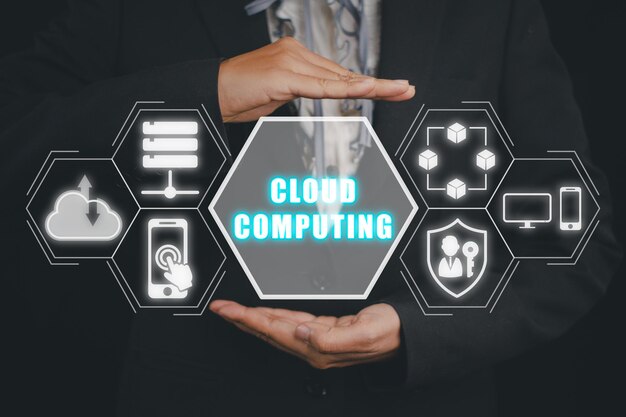Navigating AWS Compliance: A Comprehensive Guide for Customers
Navigating Amazon Web Services (AWS)‘s compliance framework can be a daunting task for customers. With an ever-growing list of regulations and industry standards, it’s essential to understand how AWS supports your compliance needs. In this comprehensive guide, we will explore the key concepts of AWS compliance and provide valuable insights for customers.
Understanding AWS Compliance
AWS provides services that help organizations meet various regulatory requirements. They offer a broad set of policies, technologies, and practices to build secure, compliant, and innovative solutions. AWS Compliance refers to how AWS services adhere to various regulatory frameworks and industry standards. This includes compliance with standards such as HIPAA, PCI-DSS, SOC 1/2/3, ISO 27001, and more.
How AWS Supports Customer Compliance
AWS offers a range of features and services to help customers maintain compliance. Some key offerings include:
- AWS Compliance Center: This is an online resource that provides information about AWS services and their compliance with various regulations and standards.
- AWS Security Hub: This is a comprehensive security and compliance solution that aggregates data from multiple AWS services, enabling users to centrally manage security and compliance across their AWS environment.
- AWS Trusted Advisor: This is a free service that provides real-time recommendations to help improve security and performance across an AWS environment.
Implementing Compliance in Your AWS Environment
To implement compliance within your AWS environment, follow these steps:
- Identify Your Compliance Requirements: Determine which regulations and standards apply to your organization.
- Assess Your Current Environment: Evaluate your current AWS setup against the identified compliance requirements.
- Implement Necessary Controls: Use AWS services and features to implement the necessary controls that support your compliance objectives.
- Monitor and Maintain Compliance: Regularly review and update your environment to ensure ongoing compliance with changing regulations.
Summary
Navigating AWS compliance can be a complex process, but with the right tools and resources, you can effectively manage your organization’s compliance requirements within the AWS environment. By understanding the various offerings from AWS and implementing proper controls, you can build a secure, compliant solution that meets both your business needs and regulatory obligations.

Exploring the Crucial Importance of AWS Compliance for Businesses
Amazon Web Services (AWS), a subsidiary of Amazon.com, has
revolutionized the technology landscape
with its
cloud computing solutions
. Launched in 2006, AWS offers a
broad spectrum
of services that caters to various industries, ranging from content delivery and storage to computing power and database management. Today, AWS is the
global leader
in the cloud computing market, hosting millions of users and businesses worldwide. With an
unmatched
infrastructure, AWS delivers unparalleled flexibility, reliability, and scalability.
However, as businesses increasingly rely on AWS for their critical operations, the importance of maintaining
compliance
has grown exponentially. Compliance with various regulations and standards is crucial for businesses to safeguard their data privacy, security, and business continuity. AWS itself adheres to multiple compliance frameworks; yet, it’s the
responsibility
of each organization to ensure that their AWS implementation remains compliant.
In this article, we will:
- Discuss the importance of AWS compliance for businesses;
- Explore various AWS compliance frameworks and their implications;
- Provide practical steps for achieving and maintaining AWS compliance.

Understanding AWS Compliance
Understanding AWS Compliance is crucial for businesses and organizations that plan to use Amazon Web Services (AWS) as their preferred cloud computing platform.
Definition and Importance of Compliance in Cloud Computing
In cloud computing, compliance refers to the adherence of a cloud provider’s services and infrastructure to specific regulations, standards, and best practices. This is important because it helps businesses maintain their own regulatory compliance while using the cloud. Compliance ensures that sensitive data is protected, and that organizations can meet their contractual, legal, and operational obligations.
AWS Compliance Overview
Shared Responsibility Model
AWS operates under a shared responsibility model, which means that both the cloud provider and the user share the responsibility for maintaining compliance. The customer is responsible for ensuring their data and applications are properly configured, while AWS manages the underlying infrastructure, including security, privacy, and availability.
Compliance Programs and Certifications
AWS offers various compliance programs and certifications to help customers meet their regulatory obligations. Some of these include:
- SOC 1: This is a set of auditing standards for service organizations related to the controls that affect the financial reporting of their customers. AWS offers SOC 1 reports for their various services.
- SOC 2: This is a reporting framework that focuses on the controls relevant to security, availability, processing integrity, confidentiality, and privacy. AWS offers SOC 2 reports for their various services.
- HIPAA: The Health Insurance Portability and Accountability Act (HIPAA) is a US law designed to protect sensitive patient health information. AWS offers HIPAA-compliant services, along with the necessary tools and features to help customers maintain compliance.
- PCI DSS: The Payment Card Industry Data Security Standard (PCI DSS) is a set of security standards designed to ensure that all companies that accept, process, store, or transmit credit card information maintain a secure environment. AWS offers PCI DSS-compliant services and infrastructure.
Regulatory Bodies and Standards
AWS complies with various regulatory bodies and standards, including:
- GDPR: The General Data Protection Regulation (GDPR) is a regulation in EU law on data protection and privacy. AWS offers GDPR-compliant services to help customers maintain compliance with this regulation.
- FISMA: The Federal Information Security Management Act (FISMA) is a US law that establishes requirements for managing information, protecting against threats, and maintaining continuous monitoring of IT systems. AWS offers FISMA-compliant services for US government agencies and contractors.
- NIST: The National Institute of Standards and Technology (NIST) is a US agency responsible for developing and implementing measurement, standards, and technology to enhance productivity, facilitate commerce, and improve the quality of life. AWS offers services that align with various NIST standards.

